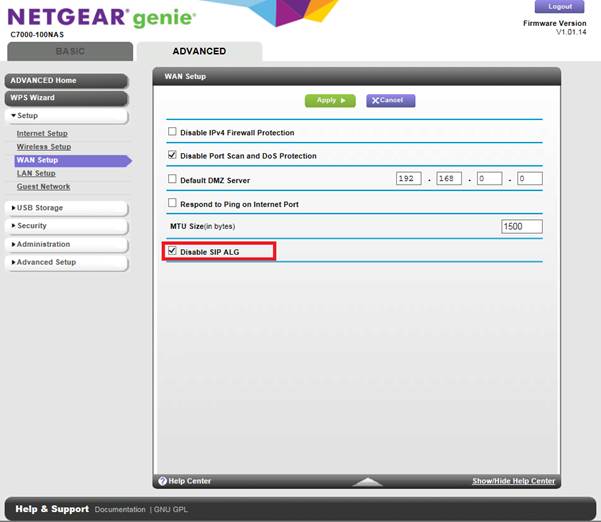

Typically this is 192.168.1.1 but you just check your default gateway by typing ipconfig in Windows command prompt or ifconfig on Linux systems from any connected device on the same LAN. Most home/residential routers have a web interface. Change you R outer Obviously a last resort if all else fails.Most Internet providers do not fully support pure IPv6 Practically this is not a realistic option for users requiring mobility but for static locations, this does remove the requirement (Must be supported by your ISP). Enable TLS on SIP Endpoints, VoiceHost supports TLS which masks SIP signalling from the prying eyes of ALG functionality.
#Should i disable sip alg netgear how to
I can't disable SIP-ALG? How to Circumnavigate any networking vendors broken implementation of SIP ALG If you are still having problems after disabling SIP ALG, please check your firewall configuration. I have disabled SIP ALG but I'm still experiencing problems.

A SIP ALG router rewrites the REGISTER request to the proxy doesn't detect the NAT and doesn't maintain the keepalive (so incoming calls will be not possible). Many SIP proxies maintain the UDP keepalive by sending OPTIONS or NOTIFY messages to the UA, but they just do it when the UA has been detected as NAT'd during the registration. Common routers just maintain the UDP "connection" open for a while (30-60 seconds) so after that time the port forwarding is ended and incoming packets are discarded by the router. This REGISTER is modified by the ALG feature (if not the user wouldn't be reachable by the proxy since it indicated a private IP in REGISTER "Contact" header). Lack of incoming calls: When a UA is switched on it sends a REGISTER request to the proxy in order to be localisable and receive any incoming calls.Therefore if you are experiencing problems we recommend that you check your router settings and turn SIP ALG off if it is enabled. This can give you unexpected behaviour, such as phones not registering and incoming calls failing. SIP ALG modifies SIP packets in unexpected ways, corrupting them and making them unreadable. How can it affect VoIP?Įven though SIP ALG is intended to assist users who have phones on private IP addresses (Class C .X), in many cases it is implemented poorly and actually causes more problems than it solves. A NAT router with a built-in SIP ALG can re-write information within the SIP messages (SIP headers and SDP body) making signalling and audio traffic between the client behind NAT and the SIP endpoint possible. If the SIP proxy doesn't provide a server-side NAT solution, then an ALG solution could have a place.Īn ALG understands the protocol used by the specific applications that it supports (in this case SIP) and does a protocol packet-inspection of traffic through it. In some scenarios, some client-side solutions are not valid, for example, STUN with symmetrical NAT router. Generally speaking, ALG works typically in the client side LAN router or gateway. There are various solutions for SIP clients behind NAT, some of them in the client side (STUN, TURN, ICE), others are in the server side (Proxy RTP as RtpProxy, MediaProxy). Many routers have SIP ALG turned on by default. Its purpose is to prevent some of the problems caused by router firewalls by inspecting VoIP traffic (packets) and if necessary modifying it. SIP ALG stands for Application Layer Gateway and is common in all many commercial routers.


 0 kommentar(er)
0 kommentar(er)
